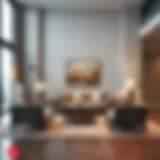Exploring Educational Institutions in Mussafah: A Comprehensive Guide
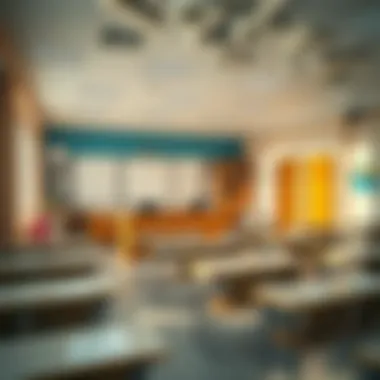
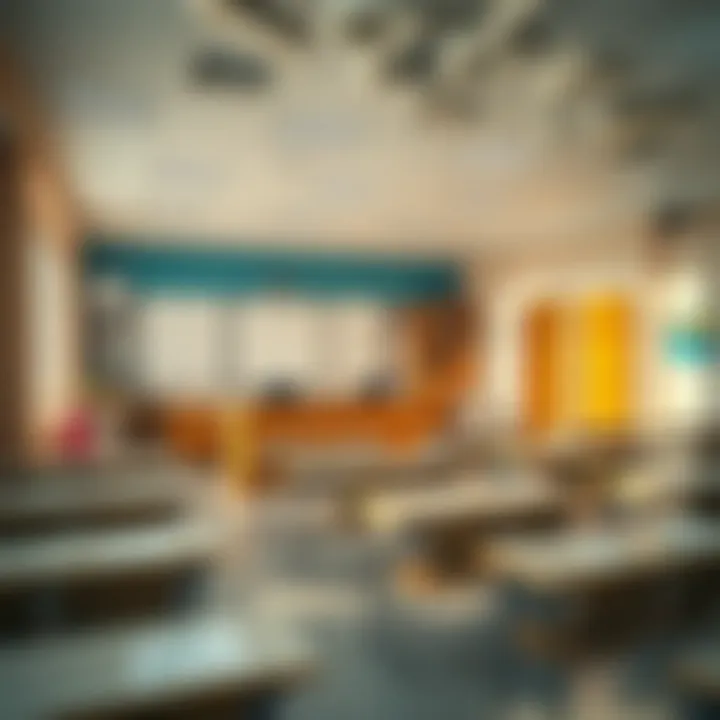
Intro
Mussafah, a bustling industrial suburb of Abu Dhabi, presents a distinctive landscape when it comes to educational institutions. As the region experiences rapid growth and diversification, navigating the educational options becomes increasingly vital for families and investors alike. Parents seek not just schools, but a holistic approach to learning that aligns with their children’s aspirations and competencies. In this guide, we delve into the various educational models available in Mussafah, highlighting the unique offerings of each institution.
Choosing the right school is akin to finding a well-fitted shoe; it needs to not only fit well but also support the path ahead. Each school has its distinct character, from the teaching philosophy it adopts to the community it fosters. This guide aims to equip readers with deep insights into the schooling landscape, including current observed trends, key rankings, and the growing engagement of the local community with educational institutions.
In a world where the educational choices can significantly shape a child’s future, understanding the subtleties of Mussafah’s educational environment becomes paramount. Let’s embark on this insightful journey to explore various facets of educational institutions in this vibrant city.
Overview of Mussafah's Educational Environment
Understanding the educational landscape in Mussafah is crucial for anyone considering this vibrant region. The education system here is not just about academic achievements; it reflects the community's values, culture, and aspirations. Parents, students, and policymakers alike benefit from knowing the unique characteristics that define education in this area.
Geographic and Demographic Context
Mussafah, located just 30 kilometers from the bustling city of Abu Dhabi, is a melting pot of cultures and nationalities. This rich mix brings a diverse set of educational needs and preferences. With its rapidly growing population, the demand for quality education has soared, leading to an expansion of schools and educational facilities. Notably, the demographic makeup influences the curriculum and teaching styles adopted in local schools. For instance, expatriate students often seek different educational systems, prompting schools to offer a blend of local and international programs.
Moreover, Mussafah's strategic position as an industrial hub means that many families relocate here for work. This transient nature creates a unique challenge for educators who must cater to students arriving from various educational backgrounds. Understanding these geographic and demographic aspects is essential in appreciating how they shape the educational institutions and their offerings in Mussafah.
Historical Development of Education in Mussafah
The history of education in Mussafah is quite fascinating. Initially, like many parts of the UAE, education was informal, dominated by traditional methods of learning that included a focus on religion and basic literacy. As the region developed economically, so did the educational framework. In the late 20th century, the establishment of formal public schools marked a significant turning point.
The local government began investing heavily in education, leading to the construction of new schools and the recruitment of qualified teachers. Over the years, Mussafah has seen the emergence of private and international schools, each contributing to a rich tapestry of educational choices. The focus has evolved from basic education to encompass critical thinking and innovative teaching methods, which is essential in today’s globalized world.
It's noteworthy that the educational institutions in Mussafah have not only mirrored the national educational policies but often have exceeded them in terms of diversity in curricula and teaching strategies. This evolution reflects the commitment of the community toward fostering an environment that encourages learning and development for every student.
"Education is the passport to the future, for tomorrow belongs to those who prepare for it today."
This quote resonates deeply within the educational community in Mussafah, as it emphasizes the importance of preparation and forward-thinking in educational practices. The commitment to evolving education reflects a keen understanding of future needs, making Mussafah's educational setup one to watch as it continues to adapt and grow.
Types of Educational Institutions
When looking at the educational landscape in Mussafah, it is crucial to understand the various types of educational institutions available. Each category of school plays a pivotal role in shaping the academic experience and career trajectories of students, guiding them in different ways based on their educational philosophies and offerings. By examining the diversity within Mussafah’s educational framework, parents, students, and policymakers can make informed decisions regarding future educational pathways.
Public Schools in Mussafah
Public schools in Mussafah are the backbone of the education system. Funded and operated by the government, these institutions provide education without charging tuition fees. They cater primarily to Emirati students, offering a curriculum aligned with the national education standards set by the UAE Ministry of Education.
In public schools, the emphasis is placed on foundational subjects such as mathematics, science, and Arabic language, while also incorporating Islamic education. The schools aim to create an inclusive environment where students from various backgrounds can learn together.
Furthermore, the expansion of public schools in Mussafah has been notable over the past few years, as many facilities have been newly built or renovated to improve the learning experience. Increased investment in technology and resources has also aided in maintaining quality education. However, challenges such as overcrowded classrooms and limited extracurricular activities still persist, which can impact overall student engagement and satisfaction.
Private Schools Overview
Private schools in Mussafah offer an alternative to public education, providing parents with different curriculum options and teaching philosophies. These institutions are often driven by specific educational ideologies, whether focused on international standards, religious values, or specialized training. The variety of private schools attracts many expatriates and local families looking for tailored educational experiences.
Subjects taught at private schools can become more diverse, including International Baccalaureate or British curriculum options. Many private schools emphasize critical thinking, creativity, and individualized learning, addressing the unique needs of each student.
These schools can be costly, however, and the disparity in tuition fees can sometimes create a divide among families based on financial ability. It’s worth noting that private schools also actively engage in community initiatives, fostering robust relationships with local businesses and organizations for sponsorships and support.
International Schools and Curriculum Options
International schools in Mussafah serve a significant role, particularly for the diverse expatriate community. These schools are renowned for offering globally recognized curricula such as the Cambridge International Examinations or the American high school diploma. They not only focus on academic rigor but also promote cultural exchange and international awareness among students.
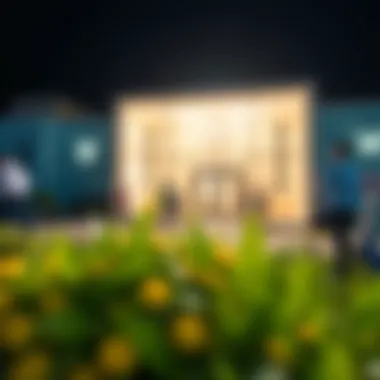
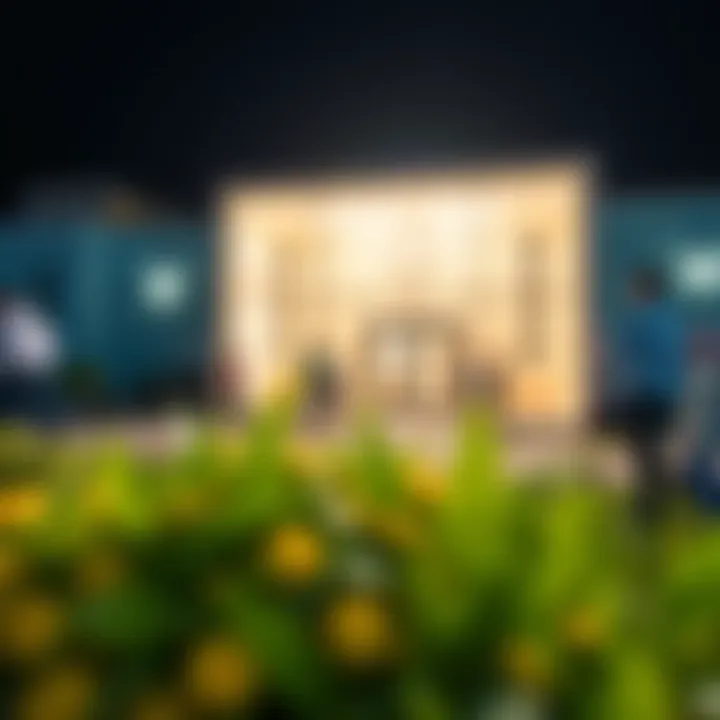
Attendance at international schools may be seen as a stepping stone for students aiming to pursue higher education abroad, as these institutions often prepare students for global challenges. Languages taught vary widely, offering multilingual programs in languages like Mandarin, French, or Spanish, thus equipping students with valuable linguistic skills.
Moreover, these schools often celebrate various cultural events, encouraging inclusivity and learning among different communities. The enthusiasm for such institutions has grown, leading to an influx of new facilities; however, it may be challenging to secure enrollment due to high demand.
Vocational and Technical Education Institutions
The landscape of education in Mussafah is not just about academic schools; vocational and technical education institutions are crucial for practical skills development. These institutions provide programs that prepare students for various careers directly after high school, bridging the gap between education and employment.
Vocational training is vital given the growth within various industries in Mussafah, including manufacturing, hospitality, and construction. Institutions such as the Abu Dhabi Vocational Education and Training Institute (ADVETI) offer specialized training and certifications that align with market demands.
The hands-on approach to learning in these institutions allows students to acquire skills that are immediately applicable in the job market, enhancing their employability. Moreover, partnerships with local businesses often lead to apprenticeships and internships, providing invaluable real-world experience.
Academic Performance and School Rankings
The landscape of educational institutions in Mussafah is not just defined by the types of schools or the communities they serve; it is also significantly shaped by academic performance and school rankings. Understanding these metrics is crucial for parents, students, and policymakers alike, as they can provide insightful indicators of educational quality and outcomes. They serve as valuable tools in navigating the complex choices parents face when selecting a school for their children.
Measuring Academic Success
When we talk about measuring academic success, it's not just about standardized test scores or grades; there is a whole tapestry of elements involved. For instance, assessments can include student engagement, graduation rates, and subsequent success in higher education. Schools in Mussafah are increasingly adopting multifaceted approaches to gauge academic performance.
- Standardized Tests - These serve as the backbone in measuring performance. Exam results from national assessments, such as the UAE's Ministry of Education exams, provide benchmarks.
- Graduation Rates - A school’s ability to see students through to graduation speaks volumes about its effectiveness. This is particularly important in an environment that fosters diverse backgrounds and learning styles.
- Progress Monitoring - Some institutions use data analytics to track student progress over time, adapting their teaching strategies based on individual performance metrics.
In Mussafah, schools that embrace such methods demonstrate a commitment to enhancing academic success beyond mere numbers, focusing instead on holistic development.
Comparative Analysis of School Performance
Looking at school performance comparatively offers another layer of understanding. Parents often find themselves weighing the pros and cons across different institutions.
For example, a private school might excel in extracurricular offerings but lag in academic rigor, while a public school may have innovative programs that enhance learning. Here are some factors for consideration:
- Curriculum Strength - Compare how various schools approach core subjects. Are they teaching according to UAE’s national standards, or do they offer international curricula?
- Teacher Qualifications - Investigating the educational backgrounds and teaching philosophies of faculty can provide insights into the level of instruction students receive.
- Resource Availability - Does the school have state-of-the-art facilities, libraries, and technology? Availability of resources often correlates directly with student success.
"A school’s environment can either make or break a student's educational journey, that much is clear."
Comparative analysis allows stakeholders to build an informed view of what each institution offers, preparing families to make decisions that align with their educational priorities and expectations. It creates a space for dialogue and shared understanding between parents, educators, and the community at large.
In summary, academic performance and school rankings are crucial in navigating the educational landscape of Mussafah. They provide critical insights into schools' effectiveness and help foster educational environments that support student achievement.
Curriculum Diversity and Innovation
Curriculum diversity and innovation represent critical cornerstones in shaping the educational landscape of Mussafah. They not only reflect the needs and aspirations of a rapidly evolving society but also cater to a diverse student population with varying backgrounds and learning preferences. The importance of a varied curriculum lies in its ability to foster creativity, critical thinking, and a well-rounded education that equips students with the skills they need to thrive in the modern world.
In Mussafah, educational institutions aim to incorporate innovative approaches to teaching and learning that go beyond traditional methodologies. This commitment to curriculum diversity enhances students’ engagement and motivation. By integrating subjects like robotics, arts, and financial literacy into the everyday learning framework, schools create environments where students can explore their interests and develop competencies relevant to today’s job market.
"A diverse curriculum empowers students to embrace their individuality while equipping them with essential life skills."
Moreover, recognizing the importance of inclusivity, many educational institutions in Mussafah emphasize the incorporation of cultural perspectives into their teaching. This not only serves to broaden horizons but also fosters respect and understanding among students from different backgrounds.
STEM Education Initiatives
STEM education initiatives have gained significant traction in Mussafah’s schools, catering to the growing demand for expertise in science, technology, engineering, and mathematics. These programs are designed to cultivate analytical skills and problem-solving abilities among students. Schools partner with local tech firms to provide hands-on experiences through internships and workshops, turning theoretical knowledge into practical skills.
Furthermore, robotics clubs and coding classes are becoming commonplace, giving students opportunities to work collaboratively on projects that stimulate their creativity and innovation. This hands-on approach not only deepens understanding but also encourages teamwork and resilience.
Arts and Humanities in Local Schools
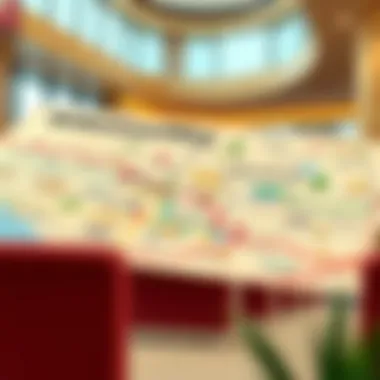
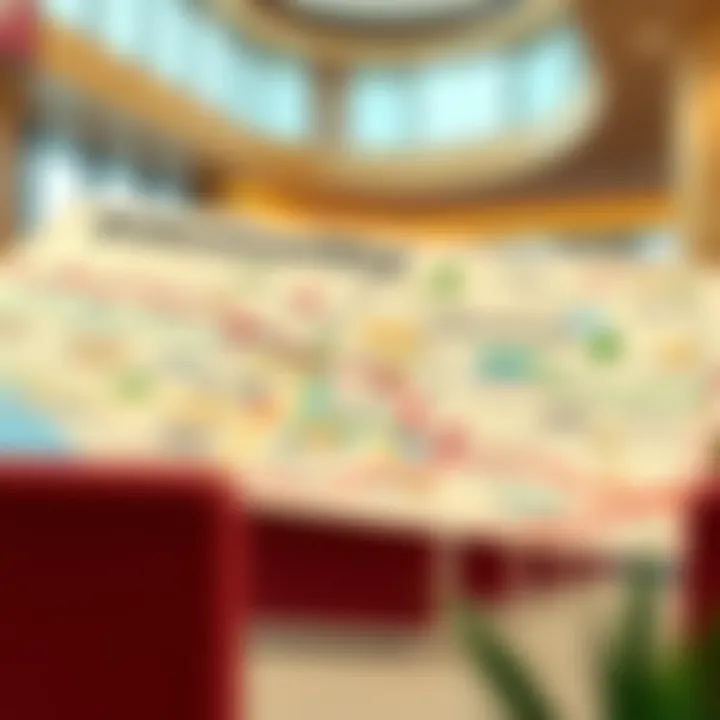
While STEM is essential, Mussafah’s educational institutions recognize the equally important role of arts and humanities. Programs in music, theater, and visual arts provide students with a platform for self-expression, essential for nurturing emotional intelligence and critical thinking.
Engagement in the arts also contributes to improved academic performance in other subjects. Schools often showcase students’ artistic talents through exhibitions and performances, promoting a culture that values creativity alongside academic rigor. By offering art electives and after-school programs, institutions encourage exploration and appreciation of diverse cultural narratives.
Language Programs and Multilingual Education
Language programs in Mussafah’s schools are vital for preparing students to navigate an increasingly globalized world. Many institutions have implemented multilingual education models, allowing students to learn in their native language while also acquiring proficiency in English and other foreign languages. This not only boosts cognitive skills but also fosters cultural awareness.
Programs like English as a Second Language (ESL) and Arabic immersion classes allow schools to cater to expatriate communities, making education accessible to everyone. The emphasis on language diversity promotes inclusivity, giving students the ability to thrive in multilingual environments.
Community Involvement in Education
Community involvement is a cornerstone for the educational experience in Mussafah. It weaves a stronger fabric among schools, families, and local entities, ensuring that every student receives support not only from teachers but also from the larger community. Engaging the community in education promotes shared responsibility and enhances the overall educational experience for students of all ages. Parents and community members play a vital role in strengthening schools' initiatives and fostering an environment where learning is valued and encouraged.
Role of Parent-Teacher Associations
The Parent-Teacher Associations (PTAs) in Mussafah serve as a bridge between parents and educators. They advocate for students, voicing concerns, and suggestions that can lead to positive changes in the school environment. PTAs often organize various activities that help engage parents more intimately in their child’s education. These initiatives may include workshops on parenting styles, educational resources, and volunteer opportunities, allowing parents to contribute directly to their child's school experience.
PTAs also fundraise for essential school projects, ensuring that schools have the necessary tools and materials to provide quality education. By fostering collaboration, PTAs enhance both the school community and student outcomes, showcasing that when parents and teachers team up, students thrive.
Local Businesses and Educational Partnerships
Local businesses in Mussafah often step up to partner with educational institutions, forming synergies that benefit both students and the community. These partnerships frequently provide students with real-world learning opportunities through internships and mentorships. Local businesses may host events like career days, helping students envision their future careers and understand the skills needed to succeed.
Moreover, businesses can contribute resources, such as funding for extracurricular activities or materials for art and science projects. By integrating real-life experiences with academic learning, these partnerships enrich the student experience, preparing them not only for the workforce but for being active community members.
Community Programs Supporting Education
Various community programs actively support education within Mussafah, creating additional layers of support for students. These programs often offer after-school tutoring, mentorship programs, and sporting events, which are crucial for developing interpersonal skills and encouraging teamwork.
Some notable programs include:
- Local libraries hosting reading programs aimed at improving literacy skills.
- Non-profit organizations offering scholarships for higher education to low-income families.
- Volunteer programs that encourage community members to share their expertise, whether in academics or crafts, to foster a love for learning.
Through these collaborative efforts, students attain additional guidance and resources that might not be available within the school environment. Moreover, such initiatives highlight the commitment of the Mussafah community to education, showing that collective effort can make a substantial difference in a child's educational journey.
Engaging the community in education is a partnership that reflects the commitment and value we place on our children’s future.
Challenges Facing Educational Institutions
The educational landscape in Mussafah is shaped by a myriad of challenges that institutions face today. These hurdles significantly impact the quality of education and the overall experience for students, teachers, and the community. Understanding these challenges is crucial for parents, investors, and policymakers alike, as it frames the context in which educational institutions operate.
Funding and Resource Allocation
Funding is the lifeblood of any educational institution, and in Mussafah, it's no different. Schools often grapple with the need for adequate resources to maintain quality education. Local and federal funding varies, and when it’s insufficient, institutions might struggle to acquire necessary materials or upgrade facilities.
- Benefits of Adequate Funding:
- Improved Infrastructure: Schools can provide modern classrooms, science labs, and libraries, which are essential for a comprehensive educational experience.
- Enhanced Educational Programs: With better funding, institutions can diversify their curriculum to offer more extracurricular activities, language courses, and specialized programs.
However, the reverse is also true—when funding is lacking, schools have to cut back on programs or transform facilities, often leading to a diminished educational experience. Parents and community members must advocate for ensuring that these institutions receive the financial backing they need.
Teacher Recruitment and Retention
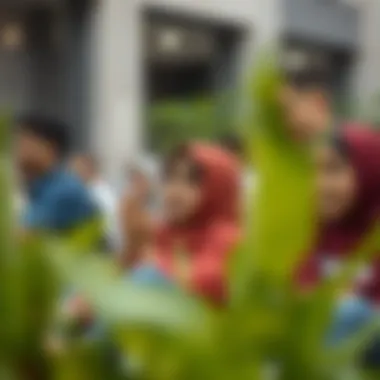
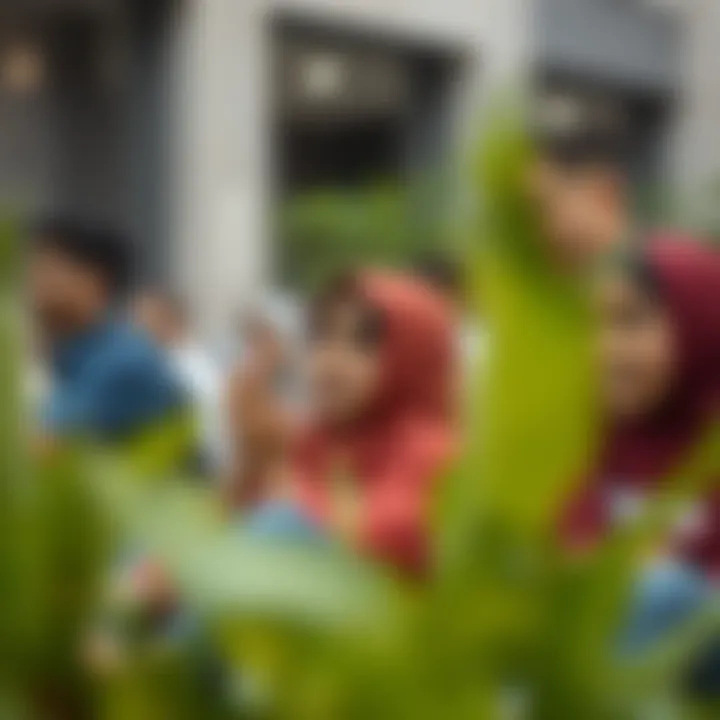
The quality of teachers is one of the most significant indicators of educational success. Yet, facing Mussafah are challenges in both recruiting and retaining qualified educators. Economic factors, working conditions, and availability of resources all influence a teacher's decision to join and remain at a school.
- Why It Matters:
- Teacher Quality Directly Affects Student Outcomes: Research consistently shows that effective teachers lead to better student performance. The continuity provided by long-term staff enhances learning stability.
- Training and Professional Development: Without the ability to draw in committed educators, schools may miss out on a vibrant exchange of innovative ideas and practices that constantly improve teaching.
To improve the situation, institutions might employ a range of incentives—competitive salaries, professional development opportunities, or improved working conditions could create a more appealing environment for teachers.
Adapting to Technological Changes
The rise of technology brings both opportunities and challenges. In Mussafah, educational institutions must adapt to the rapid pace of technological advancements. Schools need to integrate these technologies effectively to enhance learning, yet many face difficulties because of outdated systems or a lack of training.
- Adapting Technology is Crucial for:
- Modern Learning: Students today grow up in a digital age. Having access to the latest technologies in the classroom better prepares them for future careers.
- Enhancing Engagement: Interactive tools can increase student interest and participation, potentially leading to better academic performance.
To address this, schools could invest in professional development for teachers that focuses on effective technology integration. Collaborations with tech firms might also provide necessary resources, ensuring they don’t fall behind in an ever-changing landscape.
Properly addressing these challenges requires commitment from all stakeholders—parents, educators, and community leaders must work together to foster an environment that prioritizes education. The future of Mussafah’s educational institutions hinges on navigating these hurdles effectively.
Future of Education in Mussafah
In today’s fast-moving world, understanding the future of education in Mussafah holds immense importance for various stakeholders, including parents, policymakers, and investors. As the educational landscape evolves, it plays a crucial role in preparing the younger generations for global challenges and opportunities. The focus is not just on academic excellence, but on fostering an adaptable mindset among students. With advancements in technology and a growing emphasis on personalized learning, Mussafah’s educational institutions are poised to make significant strides.
Emerging Trends in Educational Practices
Education is not static; it evolves with time and societal needs. Currently, several emerging trends are making waves in Mussafah’s educational framework.
- Blended Learning: Many schools are adopting blended learning approaches, combining traditional instruction with online methods. This flexibility allows students to learn at their own pace, an approach particularly beneficial in a multicultural setting like Mussafah.
- Skill-based Programs: There is a notable shift towards skill-based education. Schools are emphasizing critical thinking, creativity, and collaboration over rote memorization. This change prepares students for real-world challenges, aligning with the demands of modern workplaces.
- Focus on Mental Health: Recognizing the importance of mental well-being, schools are incorporating programs that promote emotional intelligence and resilience. This holistic approach aims to develop well-rounded individuals who can handle both academic pressures and personal challenges.
These trends collectively underscore a movement towards creating not just students, but future leaders equipped with the necessary tools to thrive in diverse spheres.
Predictions for Educational Growth
Looking ahead, the predictions for educational growth in Mussafah are optimistic and exciting. The ongoing investments in infrastructure and resources signal a commitment to improving the educational ecosystem.
- Increase in Enrollment: With the population growth in Mussafah, schools will likely see a rise in enrollment numbers. This surge will drive the need for more institutions to accommodate diverse educational needs.
- Diverse Curriculum Expansion: Schools are anticipated to diversify their curricula further, integrating more international programs and languages. This will cater to the expatriate community while preparing local students for a globalized world.
- Technological Integration: The integration of advanced technologies in classrooms will continue to grow. Virtual reality, artificial intelligence, and personalized learning analytics are just a few areas expected to expand, bringing about significant changes to teaching methods.
- Strengthening Community Partnerships: Educational institutions will more likely strengthen partnerships with local businesses and organizations, creating pathways for internships and job placements. This synergy between education and industry will enhance the relevance of school programs in relation to market needs.
"The future of education is bright in Mussafah, with innovations paving the way for unparalleled growth."
As we gather insights into the future of education in Mussafah, it’s clear that the collaborative efforts of all stakeholders will be pivotal in shaping a robust educational landscape. A dedication to embracing these emerging trends can ensure that Mussafah stands as a beacon of educational excellence.
Epilogue: Understanding Mussafah’s Educational Landscape
The examination of educational institutions in Mussafah has unveiled a landscape that is as diverse as it is complex. Each educational entity, whether public, private, or international, brings unique offerings and challenges to the table. The importance of understanding this educational framework cannot be overstated; it serves as a roadmap for parents, students, and policymakers alike as they navigate the complexities of today's educational systems.
From the geographical nuances that characterize the student body to the historical evolution of educational policies, every aspect plays a crucial role in shaping the current and future educational environment. The interplay between academic performance and community involvement emphasizes the role of education not just as a means of content delivery but as a community endeavor, fostering growth and development.
Summary of Key Findings
- Diverse Educational Options: Mussafah houses a spectrum of educational institutions, ranging from local public schools to international curricula, creating an ecosystem rich in choices.
- Community Engagement is Vital: Active participation from parents and local businesses significantly enhances the educational experience, reinforcing the idea that learning extends beyond classroom walls.
- Navigating Challenges: Institutions in Mussafah face significant hurdles, from resource allocation to technological adaptation, challenging them to innovate and respond effectively to changing demands.
- Looking Ahead: Emerging educational trends reflect a broader global context, with increasing emphasis on STEM fields, arts integration, and multilingual programs tailored to the region's cultural diversity.
"Education is not preparation for life; education is life itself." - John Dewey
Call to Action for Stakeholders
For stakeholders—be it investors looking into educational properties, homeowners assessing school districts, or expatriates seeking optimal educational pathways for their children—there are several considerations to keep in mind:
- Engage with Local Schools: Building relationships with educational institutions can lead to insights that inform investment decisions and community involvement.
- Advocate for Improvements: Push for better funding and resources not only as investors but as community members who are invested in the quality of education available.
- Support Partnerships: Foster collaborations between businesses and schools to create opportunities that benefit both students and the local economy.
- Be Informed: Continually stay updated on changes in educational policies and trends within Mussafah to make informed decisions that can influence the educational landscape positively.
In sum, understanding Mussafah’s educational landscape is not a one-time endeavor. It requires ongoing engagement, reflection, and action from all stakeholders. As the community evolves, so too should its approach to education, ensuring that every child has access to the tools necessary for success.
